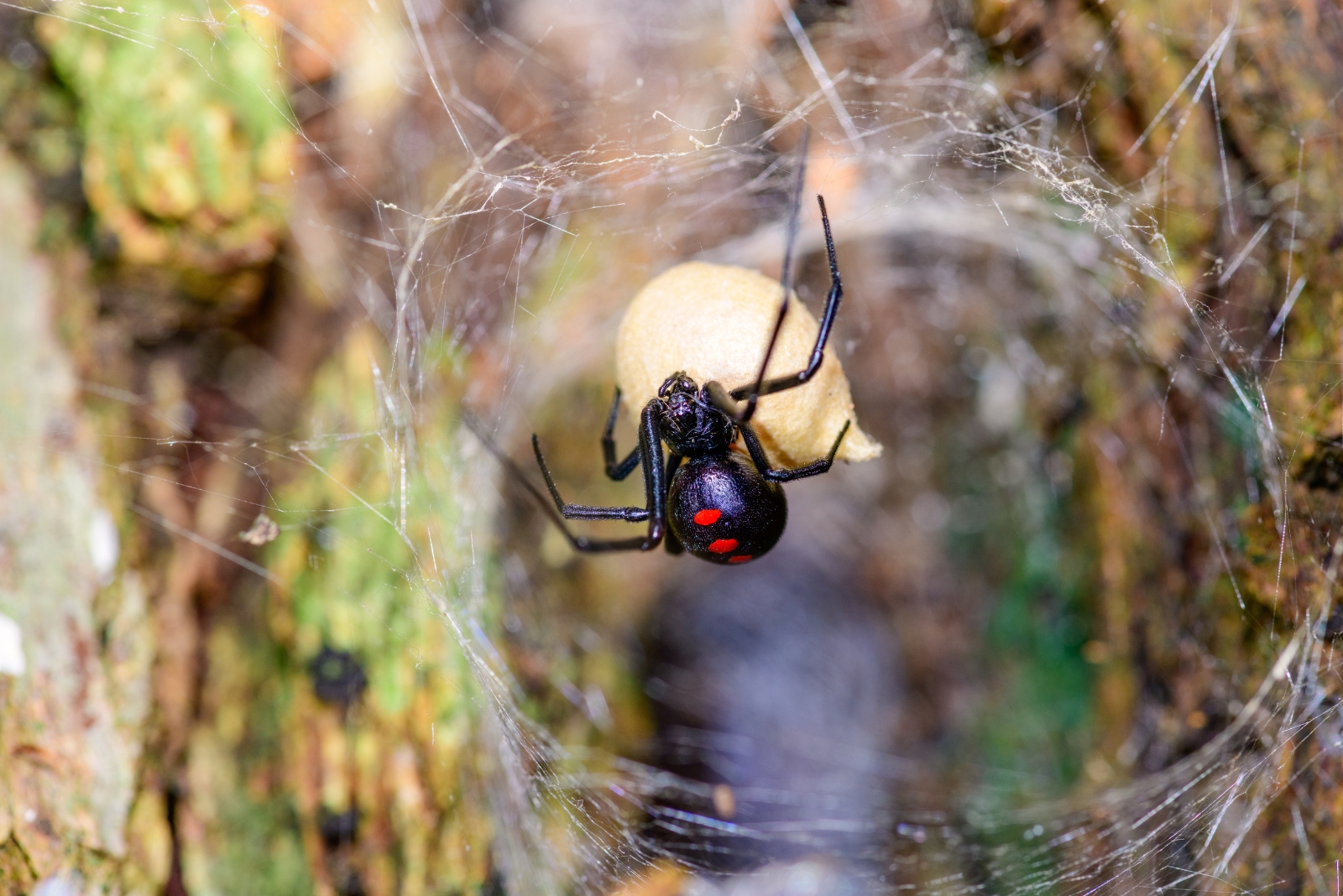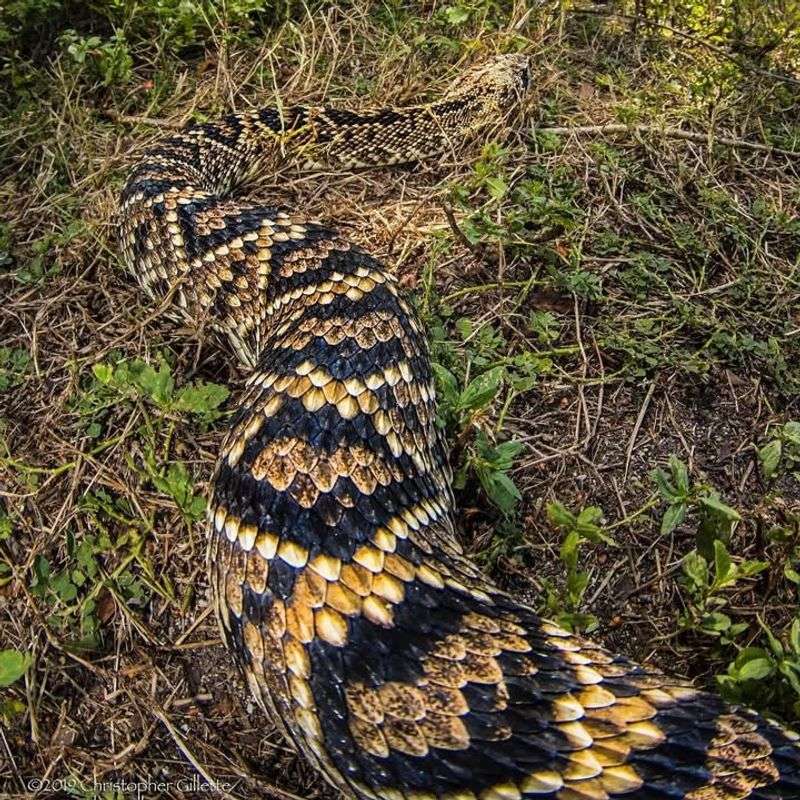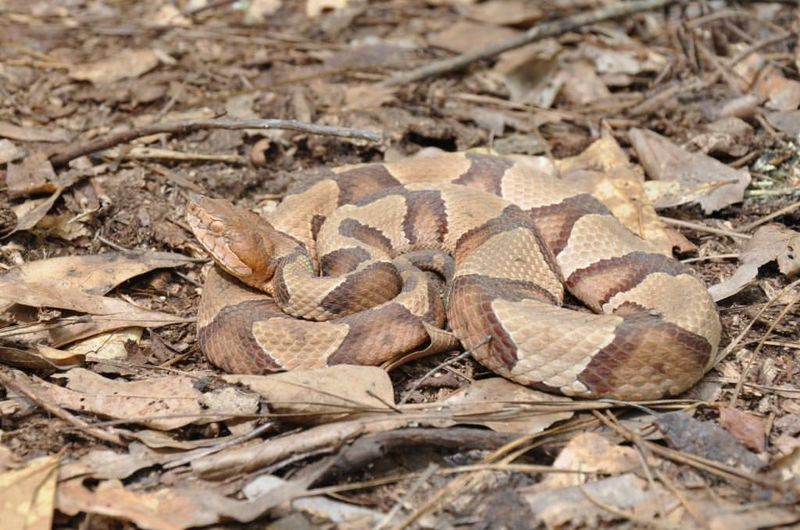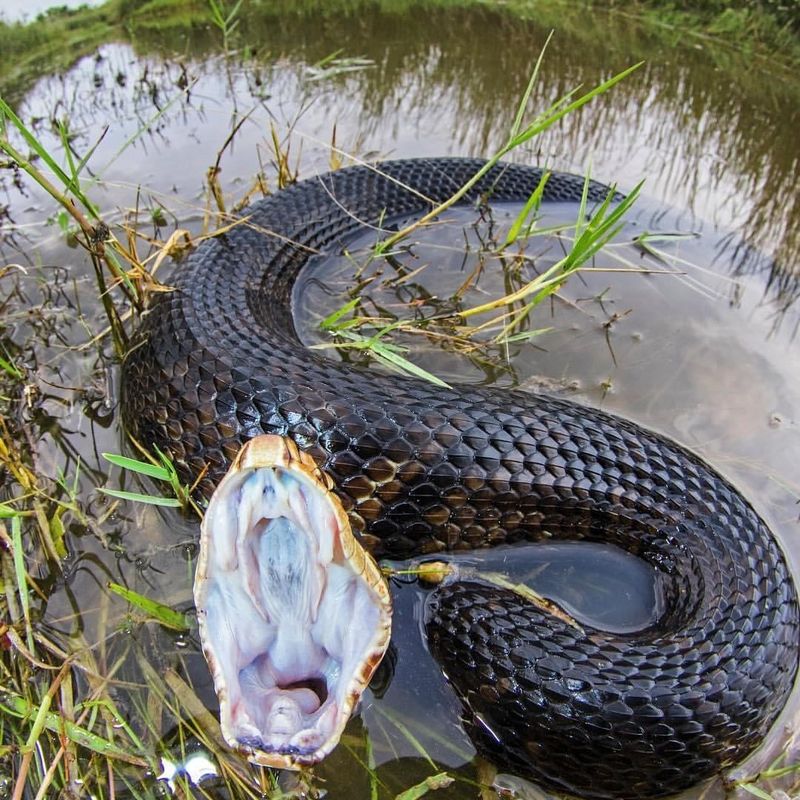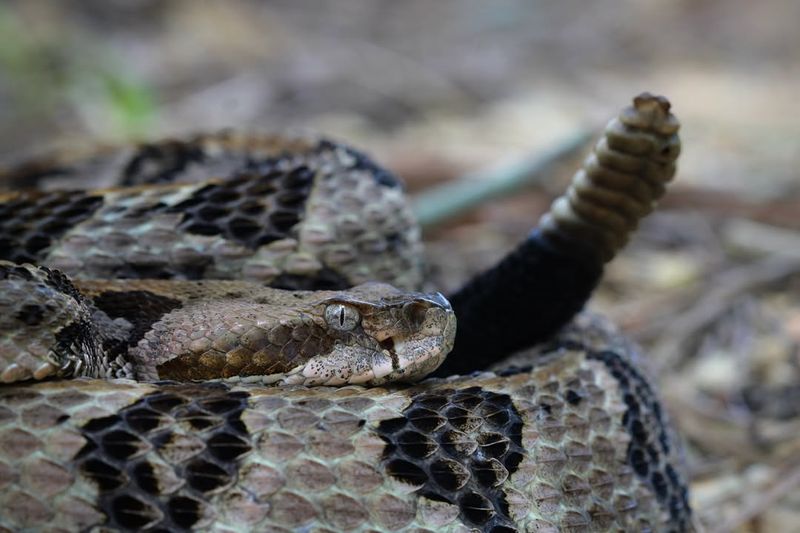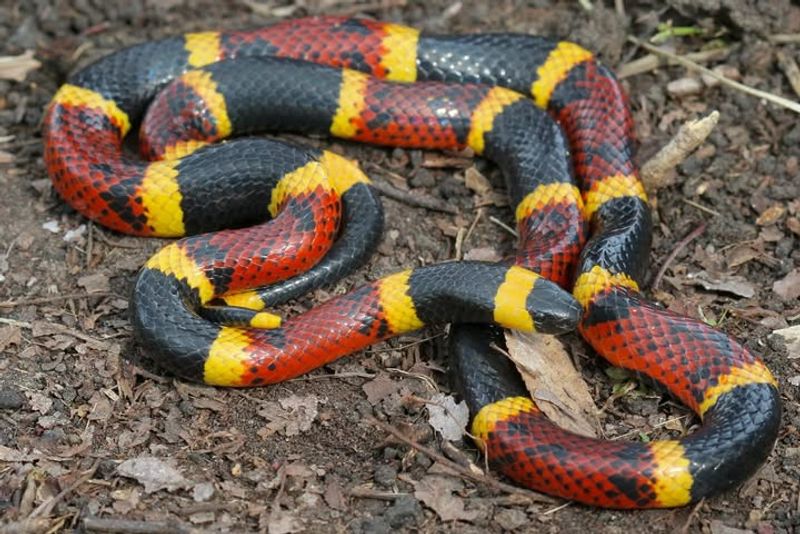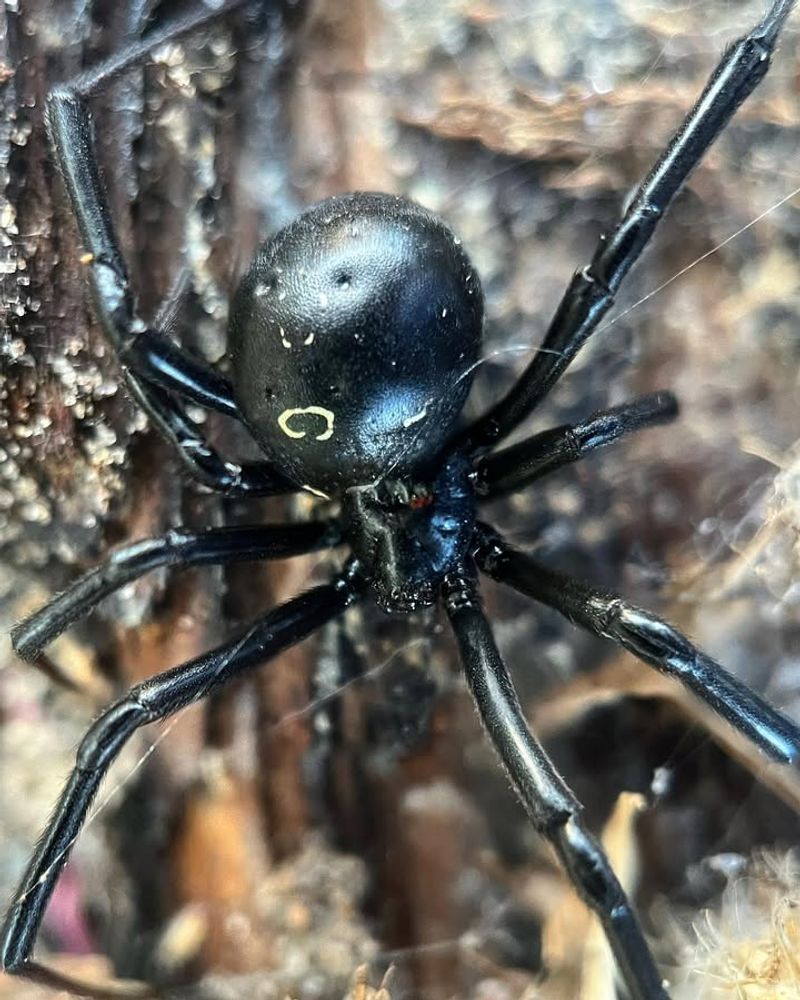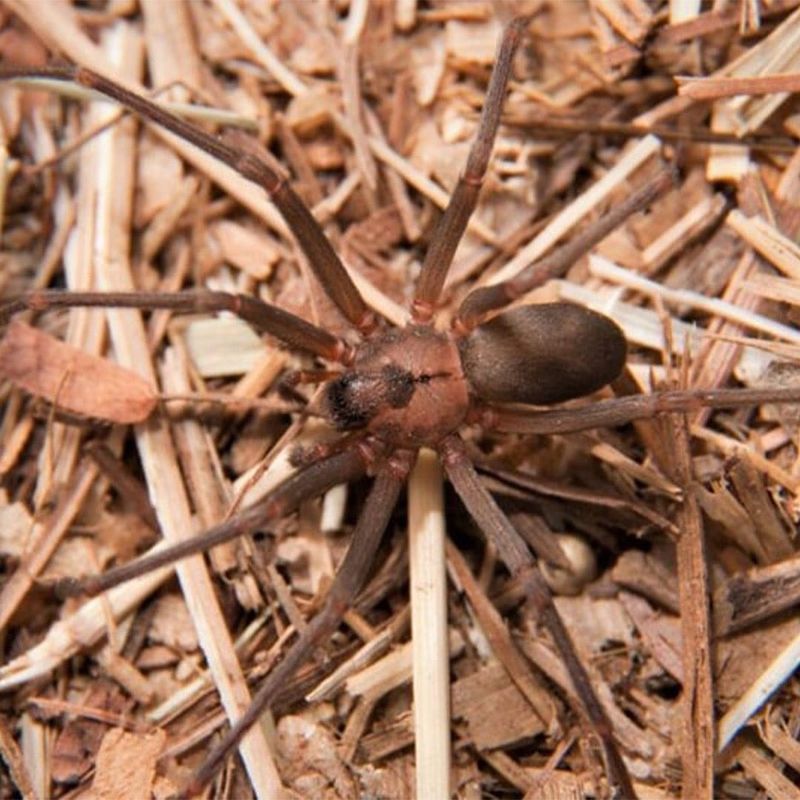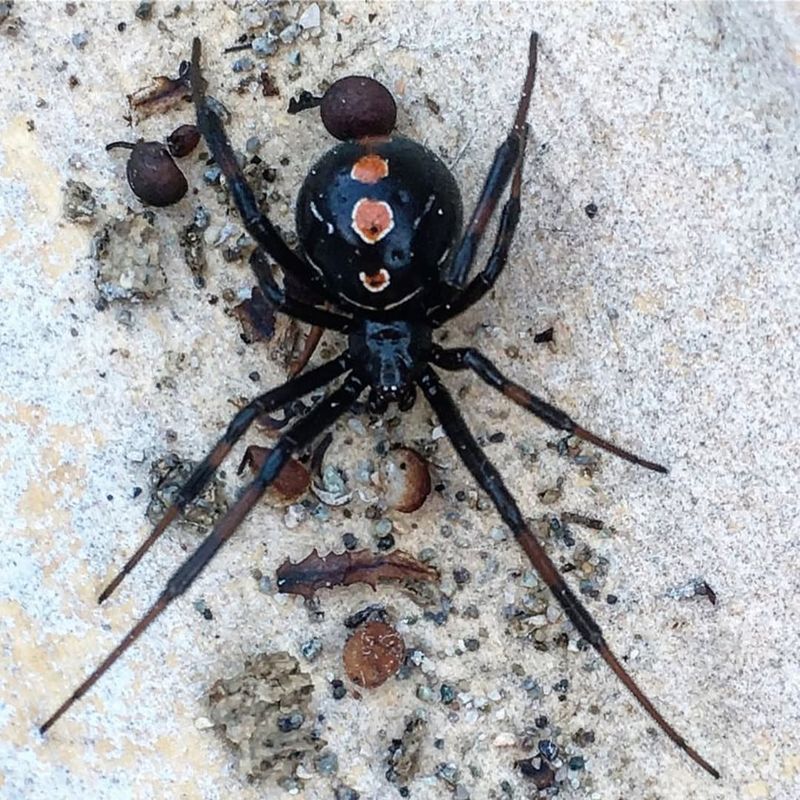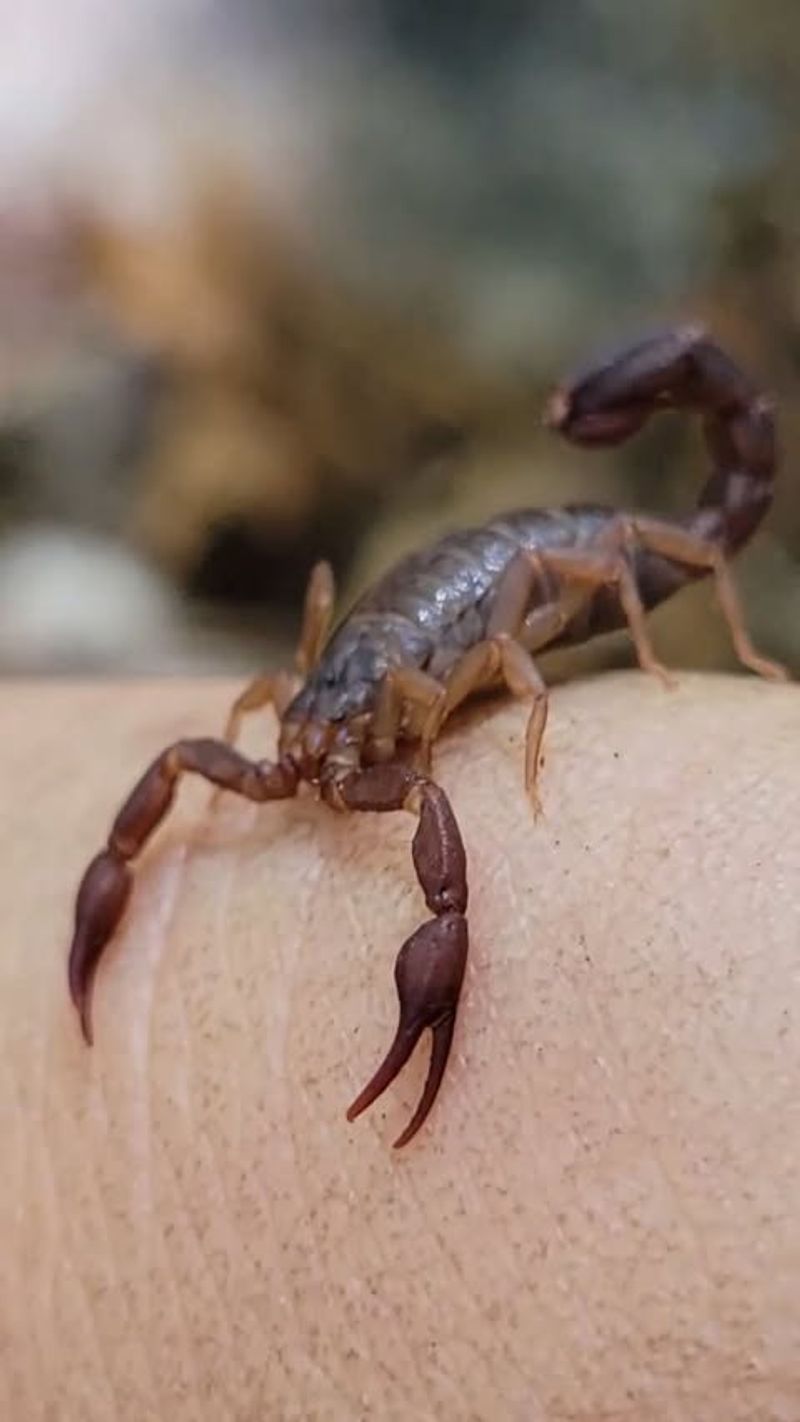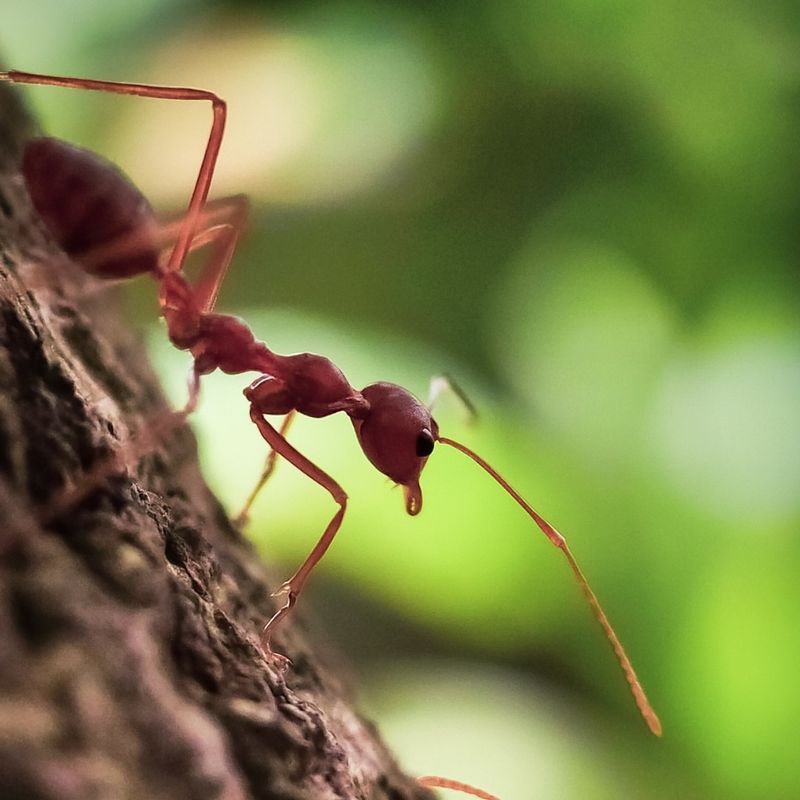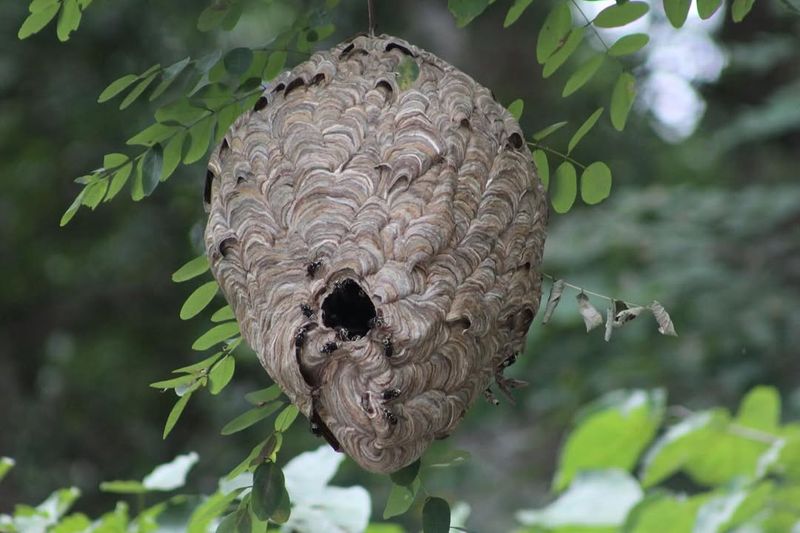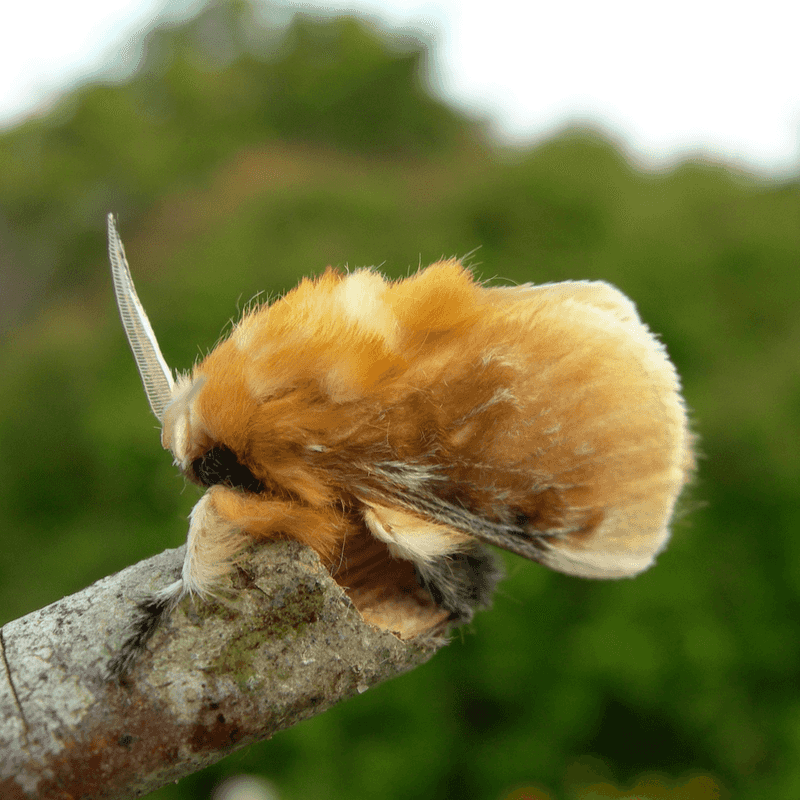Alabama’s outdoors are full of fascinating creatures—but some come with a sting or bite you’ll want to avoid. Knowing which animals are venomous can keep you and your family safe.
I’ve listed twelve you should watch for in Alabama. Stay alert and enjoy your yard without any nasty surprises.
1. Eastern Diamondback Rattlesnake
Sporting diamond-shaped patterns along its back, this heavyweight champion of venomous snakes can grow over six feet long. Alabama’s coastal plains and pine forests provide ideal habitat for these impressive reptiles.
Their distinctive rattle warns hikers before striking, giving you time to back away slowly. Most bites happen when people accidentally step too close or try to handle them.
If you spot one while exploring Alabama’s wilderness, give it plenty of space and let it move along peacefully on its own.
2. Copperhead Snake
With hourglass-shaped bands in beautiful copper tones, these snakes blend perfectly into Alabama’s leaf-covered forest floors. They’re responsible for more snake bites than any other venomous species in the state, mainly because people don’t see them until it’s too late.
Copperheads rarely strike unless threatened or stepped on directly. Their venom isn’t usually fatal to healthy adults, but medical attention is still necessary.
Always watch where you place your hands and feet when hiking around Alabama’s wooded areas and rocky outcrops.
3. Cottonmouth (Water Moccasin)
Alabama’s swamps, rivers, and wetlands are home to this semi-aquatic serpent that opens its mouth wide to reveal a bright white interior when threatened. That defensive display is where the name cottonmouth comes from, and it’s your signal to retreat immediately.
Unlike harmless water snakes, cottonmouths swim with their entire body floating on the surface. They’re generally not aggressive but will defend themselves if cornered.
Exercise caution around Alabama’s waterways, especially in marshy areas.
4. Timber Rattlesnake
Found in Alabama’s mountainous regions and hardwood forests, timber rattlesnakes display variable colors from yellow to dark brown with chevron-shaped crossbands. Some folks call them canebrake rattlesnakes in the southern parts of the state.
During summer months, pregnant females gather at communal den sites to give birth. They’re generally docile unless provoked, preferring to remain motionless and rely on camouflage.
Always listen for that telltale rattle when hiking through Alabama’s forested hills and rocky slopes during warmer months.
5. Coral Snake
Bright bands of red, yellow, and black make this snake one of Alabama’s most colorful reptiles. Remember the saying: red touches yellow, kills a fellow; red touches black, venom lack.
Coral snakes possess extremely potent neurotoxic venom but have small mouths and rarely bite humans. They’re shy creatures that spend most of their time underground or hidden beneath debris.
Alabama residents should still exercise caution when moving logs, rocks, or yard waste where these beautiful but dangerous snakes might be hiding underneath.
6. Black Widow Spider
That infamous red hourglass marking on a shiny black abdomen signals danger for anyone poking around Alabama sheds, garages, or woodpiles. Female black widows pack venom fifteen times more potent than a rattlesnake’s, though they inject much smaller amounts.
Males are harmless and much smaller than females. Bites typically occur when the spider feels trapped against human skin.
Always wear gloves when reaching into dark spaces around your Alabama property, and shake out shoes before putting them on each morning.
7. Brown Recluse Spider
A dark violin-shaped marking on its back identifies this shy spider that prefers hiding in undisturbed areas throughout Alabama homes and buildings. Despite their scary reputation, brown recluses rarely bite unless accidentally pressed against skin.
Their venom can cause tissue damage that takes months to heal in some cases. Most bites happen when people put on clothing or shoes where the spider has taken shelter.
Alabama residents should regularly clean storage areas and inspect items that haven’t been moved in a while.
8. Southern Black Widow
Similar to its cousin but more commonly found outdoors, the southern black widow builds irregular webs under rocks, in hollow stumps, and around Alabama’s rural structures. Only females pose a threat, as males are too small to penetrate human skin.
Symptoms from bites include severe muscle cramps, nausea, and breathing difficulties. Antivenom is available and highly effective when administered promptly.
Check outdoor furniture, grills, and play equipment regularly if you live in Alabama, especially before using items that have sat unused for several days.
9. Scorpions
Alabama hosts several scorpion species, with the southern devil scorpion being most common across the state. These nocturnal hunters glow under ultraviolet light, making nighttime detection easier for concerned homeowners.
While their stings are painful, Alabama scorpions aren’t considered medically dangerous to healthy adults. The sensation resembles a wasp sting with localized swelling and discomfort.
They often enter Alabama homes seeking moisture and shelter, so seal cracks around doors and windows, and always check shoes and towels before use in scorpion-prone areas.
10. Fire Ants
Originating from South America, red imported fire ants have conquered Alabama yards and fields with aggressive territorial behavior. Their mounds can appear overnight, and disturbing one sends hundreds of angry ants swarming up shoes and pant legs.
Each ant can sting multiple times, injecting venom that creates painful, itchy pustules lasting days. Some people experience severe allergic reactions requiring immediate medical care.
Alabama residents should teach children to recognize and avoid fire ant mounds, and consider professional treatment for infestations near homes and play areas.
11. Bald-Faced Hornet
Despite its name, this insect is actually a type of yellowjacket that builds large, gray paper nests in Alabama trees and shrubs. Workers aggressively defend their colony, sometimes chasing intruders over 300 feet from the nest.
Their stings are extremely painful and can trigger dangerous allergic reactions in sensitive individuals. Multiple stings are common during attacks.
If you discover a nest on your Alabama property, keep everyone away and contact pest control professionals rather than attempting removal yourself, especially during peak activity in late summer.
12. Puss Caterpillar
Looking like a tiny toupee crawling across Alabama trees, this fuzzy caterpillar hides venomous spines beneath its soft-looking exterior. Touching one delivers instant, intense pain that spreads quickly and can last for days.
Children are particularly vulnerable because the caterpillar’s appearance tempts them to touch it. Symptoms include burning sensations, swelling, nausea, and even difficulty breathing in severe cases.
Teach kids throughout Alabama never to touch caterpillars, no matter how cute or fuzzy they appear, and seek medical attention if contact occurs.

